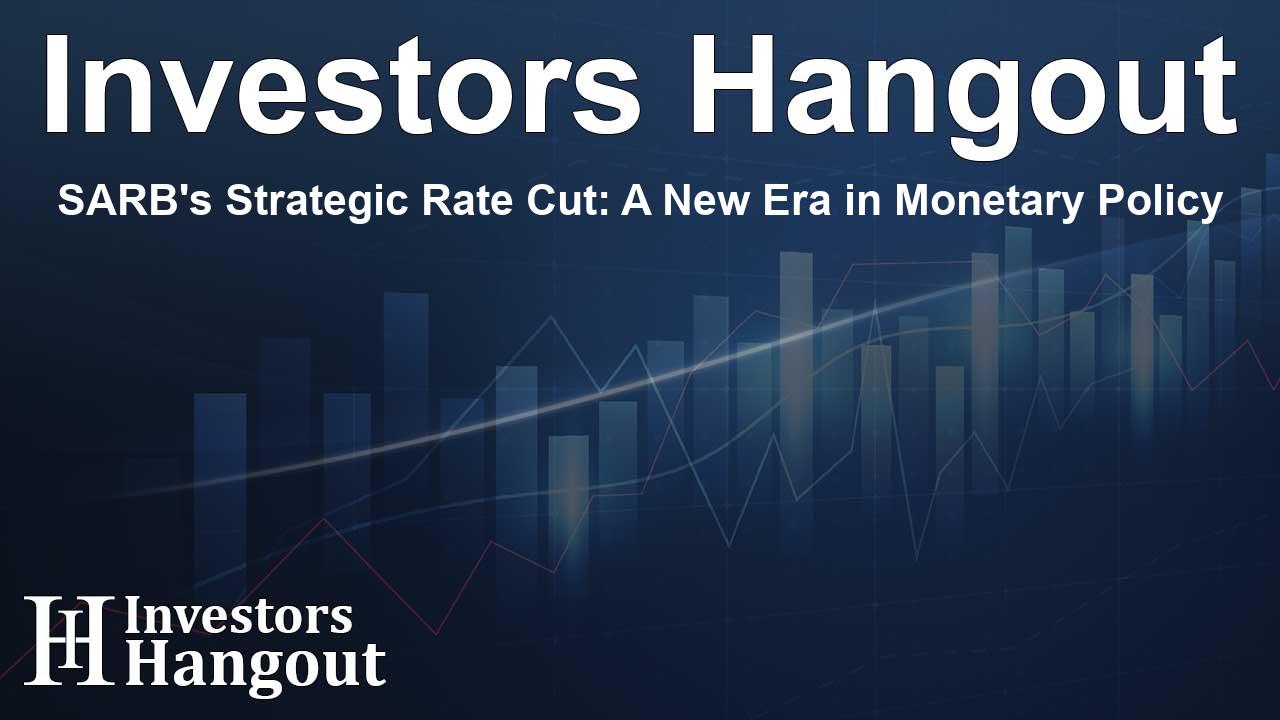SARB's Strategic Rate Cut: A New Era in Monetary Policy

Understanding the South African Reserve Bank's Latest Rate Decision
The South African Reserve Bank (SARB) recently made headlines by cutting the repurchase rate by 25 basis points to 7.75%. This crucial decision has sparked discussions among economists and policymakers alike. The announcement was made by Governor Lesetja Kganyago and is set to be effective soon, reflecting a shift in the bank's approach to economic management.
The Economic Landscape Influencing the Rate Cut
The global economic environment has been complex, characterized by a stronger dollar, rising interest rates, and new inflationary pressures. In these turbulent times, the SARB's decision underscores its commitment to stabilizing the South African economy. The Monetary Policy Committee (MPC) unanimously supported this change, emphasizing the importance of navigating through the current economic landscape effectively.
Positive Growth Indicators
Despite some uncertainties, there are positive signs of growth recovery in South Africa. Recent data shows a decline in unemployment, which points to an improving labor market. Furthermore, the implementation of the Two-Pot pension system is anticipated to provide additional economic support. Although manufacturing data remains mixed, strength in the mining sector has contributed positively, showcasing job gains across various industries. The Committee projects that economic growth could reach around 2% by 2027 if current trends continue.
Fluctuating Inflation Rates
In recent months, consumer price inflation in South Africa has dipped below the desired target, registering 2.8% in October. This decrease is largely due to a favorable exchange rate and lower oil prices compared to previous years. Projections indicate that inflation will likely remain below 4% until mid-2025, with a gradual increase anticipated afterward, particularly influenced by rising electricity costs.
Future Inflation Expectations and Risks
The MPC expects that inflation expectations will continue to moderate, moving closer to the midpoint target over time. However, they also recognize potential medium-term risks, including increased prices for essentials such as food, electricity, and water, as well as insurance premiums and wage settlements. These factors could complicate the inflation outlook and influence future policy decisions.
Maintaining Cautious Optimism
The decision to lower the policy rate is strategically aligned with SARB's broader goal of achieving the inflation target while balancing caution in light of unpredictable global monetary factors. The MPC stresses that future rate adjustments will depend on evolving data and a careful assessment of risks. Additionally, the ongoing depreciation of the rand adds another layer of complexity to decision making.
Commitment to Economic Stability Through Structural Reforms
SARB remains committed to achieving low and stable inflation and actively working on structural reforms to enhance economic growth. These initiatives aim to rebuild fiscal and monetary policy space, which is critical given the external challenges faced today. Positive changes in credit rating outlooks have also been noted, suggesting an opportunity for longer-term economic betterment.
Insights from Global Monetary Policy Trends
This rate cut from the SARB follows similar actions by other major banks, including recent reductions by the European Central Bank, Bank of England, and US Federal Reserve. This synchronized approach among central banks reflects a growing recognition of the intertwined nature of global economies and the need for collaborative action in monetary policy.
Frequently Asked Questions
What prompted the South African Reserve Bank to cut the rate?
The SARB's decision to cut the rate was driven by a complex global economic landscape and positive local growth indicators, including a decrease in unemployment.
How does inflation impact the SARB's decision?
Inflation rates significantly influence the SARB's policy decisions. Recent trends show a drop in inflation, which allowed for the rate cut.
What are the implications of the new repurchase rate?
The new repurchase rate may promote borrowing and investment, stimulating economic activity while also addressing inflation stability.
Are there risks associated with the SARB's rate cut?
Yes, potential risks include rising prices for essential goods and the unpredictable behavior of the rand against other currencies.
How is the SARB planning to manage future economic challenges?
The SARB is committed to ongoing structural reforms to improve growth capacity, alongside a vigilant monitoring of economic indicators and risks.
About Investors Hangout
Investors Hangout is a leading online stock forum for financial discussion and learning, offering a wide range of free tools and resources. It draws in traders of all levels, who exchange market knowledge, investigate trading tactics, and keep an eye on industry developments in real time. Featuring financial articles, stock message boards, quotes, charts, company profiles, and live news updates. Through cooperative learning and a wealth of informational resources, it helps users from novices creating their first portfolios to experts honing their techniques. Join Investors Hangout today: https://investorshangout.com/
Disclaimer: The content of this article is solely for general informational purposes only; it does not represent legal, financial, or investment advice. Investors Hangout does not offer financial advice; the author is not a licensed financial advisor. Consult a qualified advisor before making any financial or investment decisions based on this article. The author's interpretation of publicly available data shapes the opinions presented here; as a result, they should not be taken as advice to purchase, sell, or hold any securities mentioned or any other investments. The author does not guarantee the accuracy, completeness, or timeliness of any material, providing it "as is." Information and market conditions may change; past performance is not indicative of future outcomes. If any of the material offered here is inaccurate, please contact us for corrections.